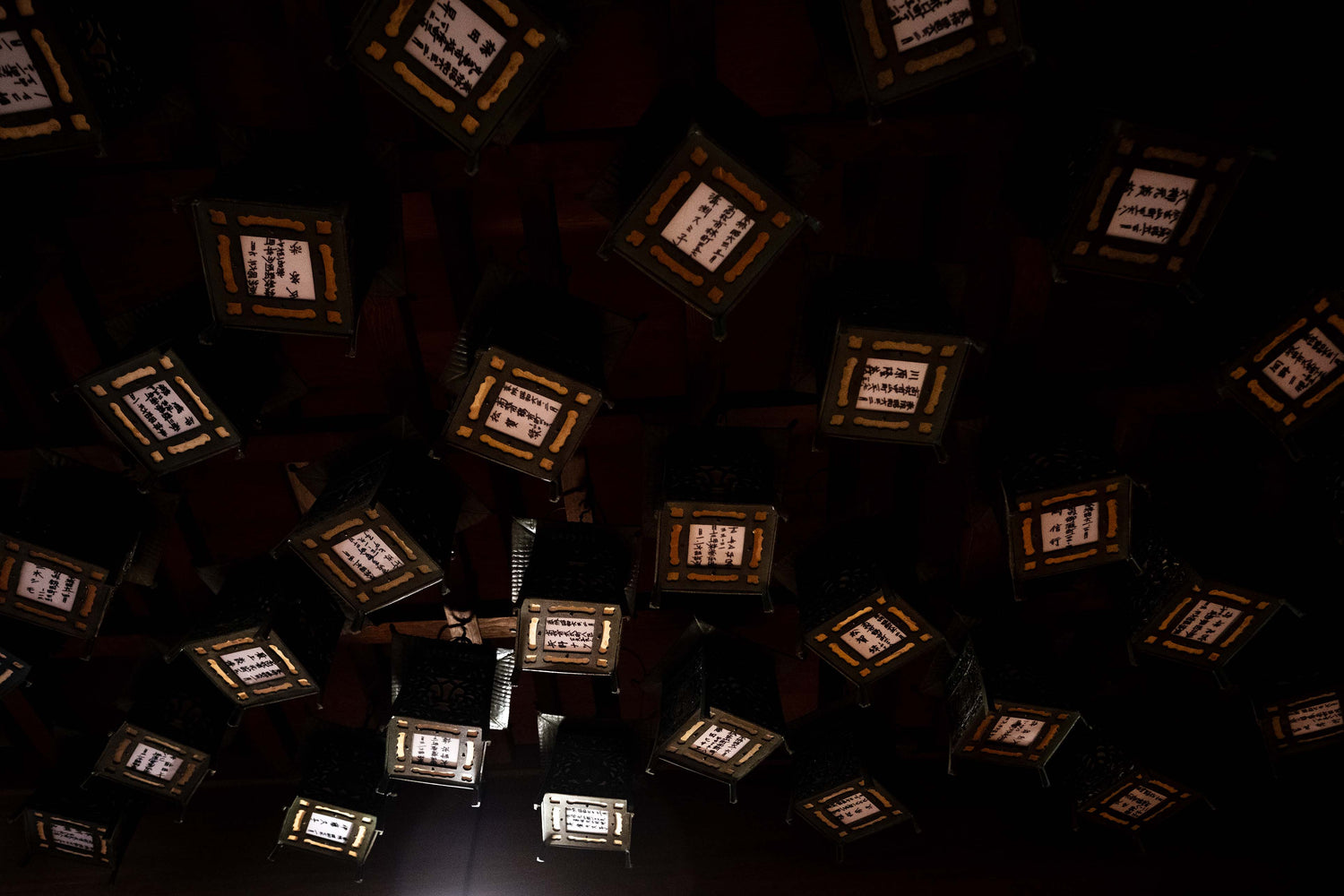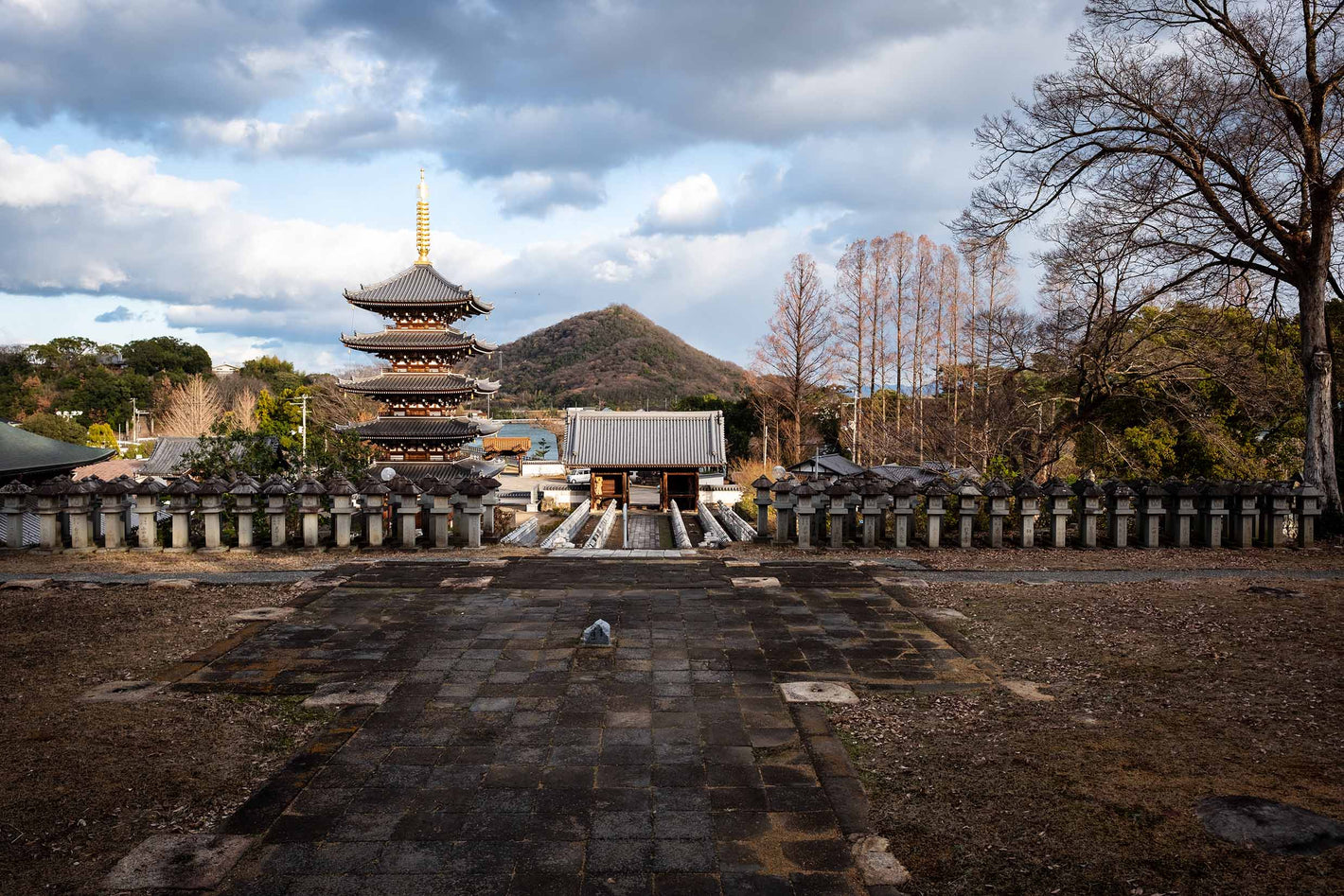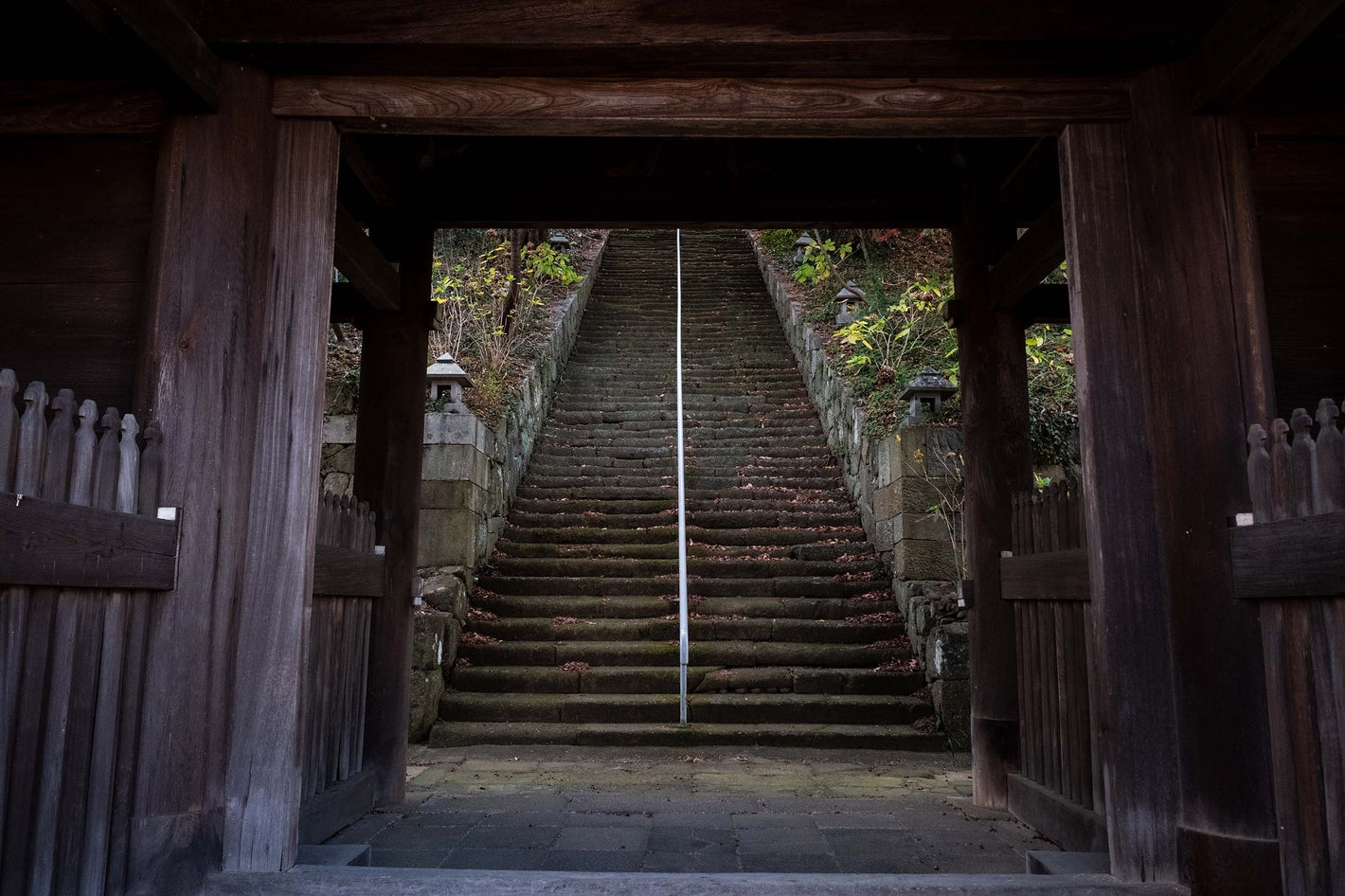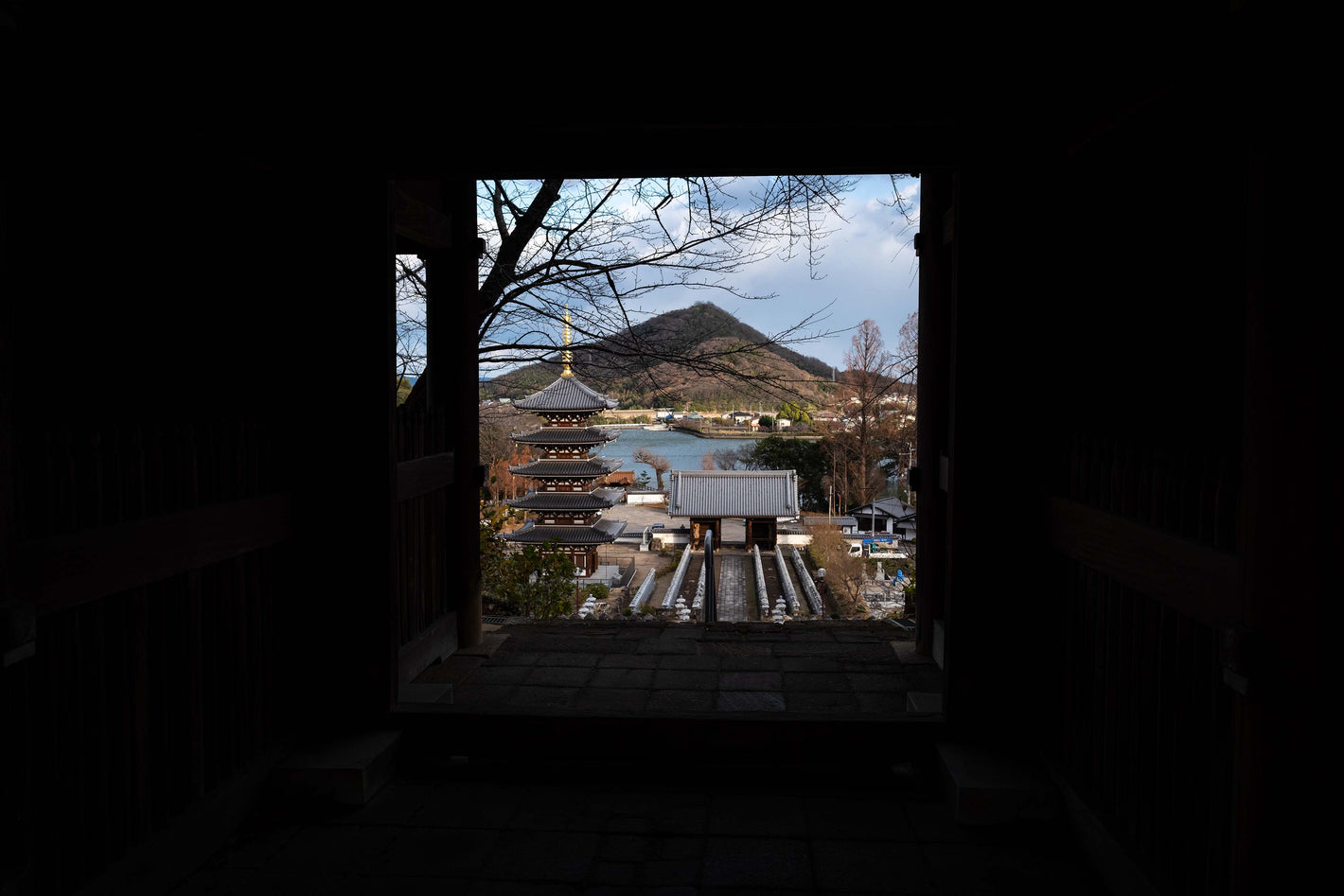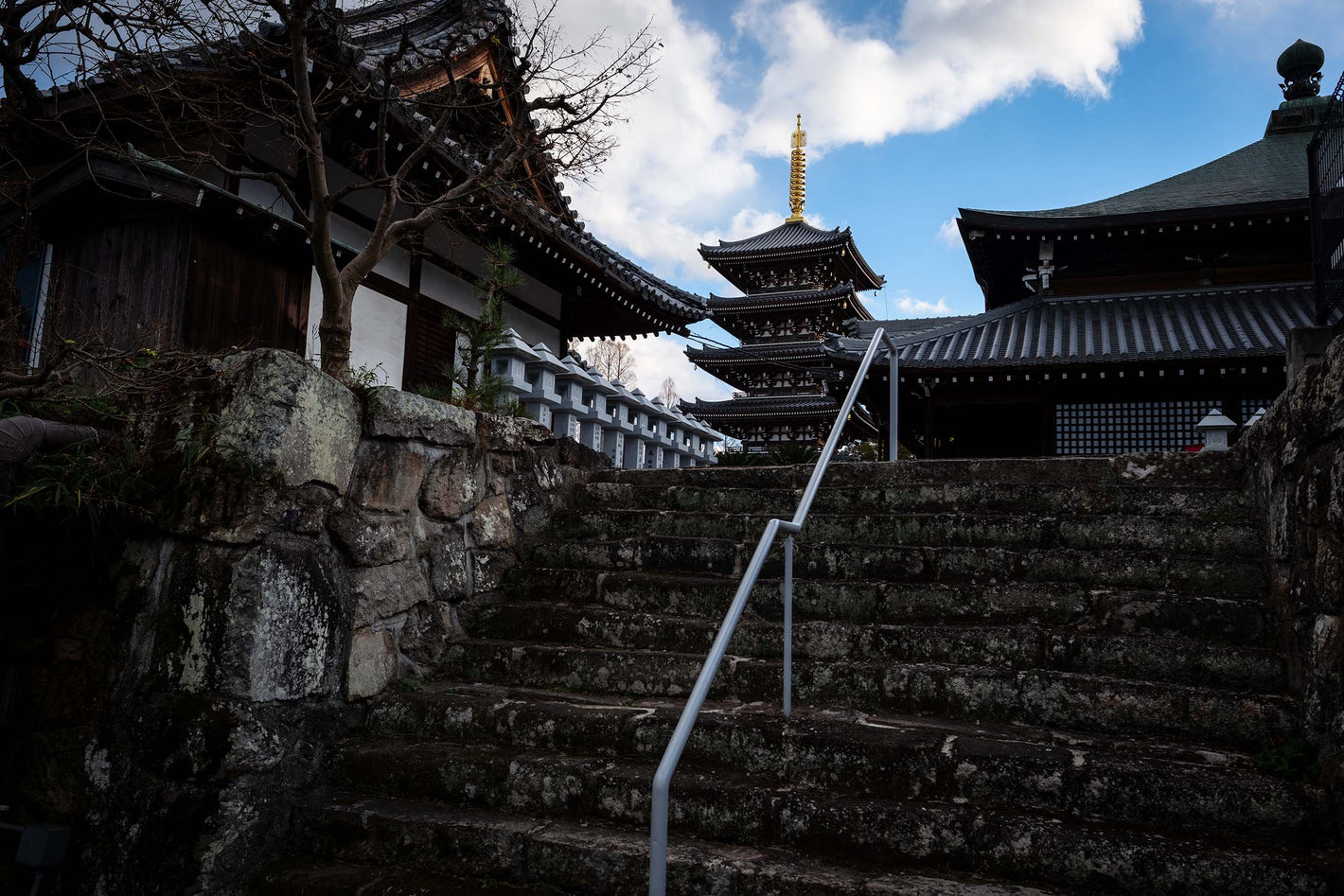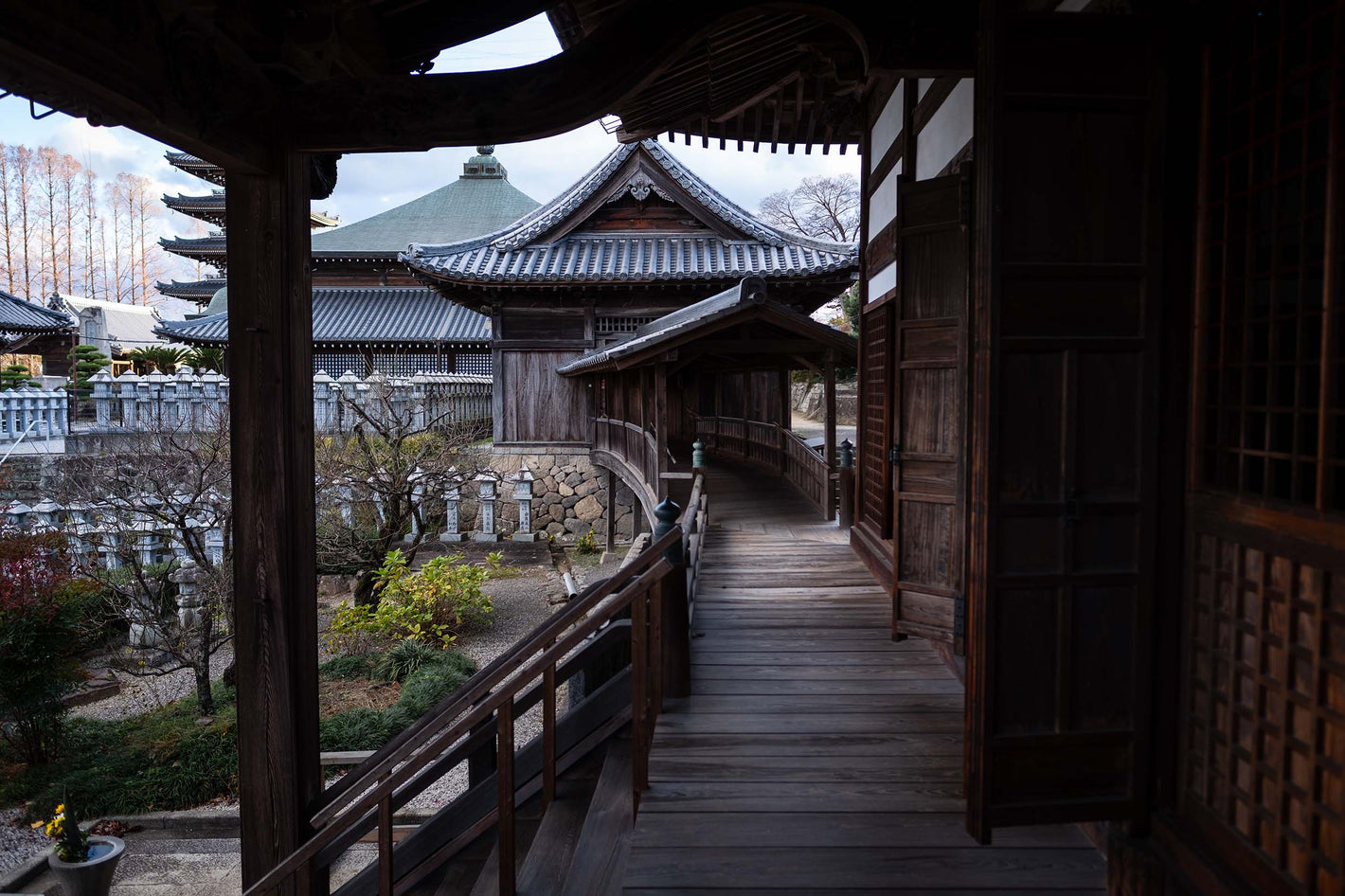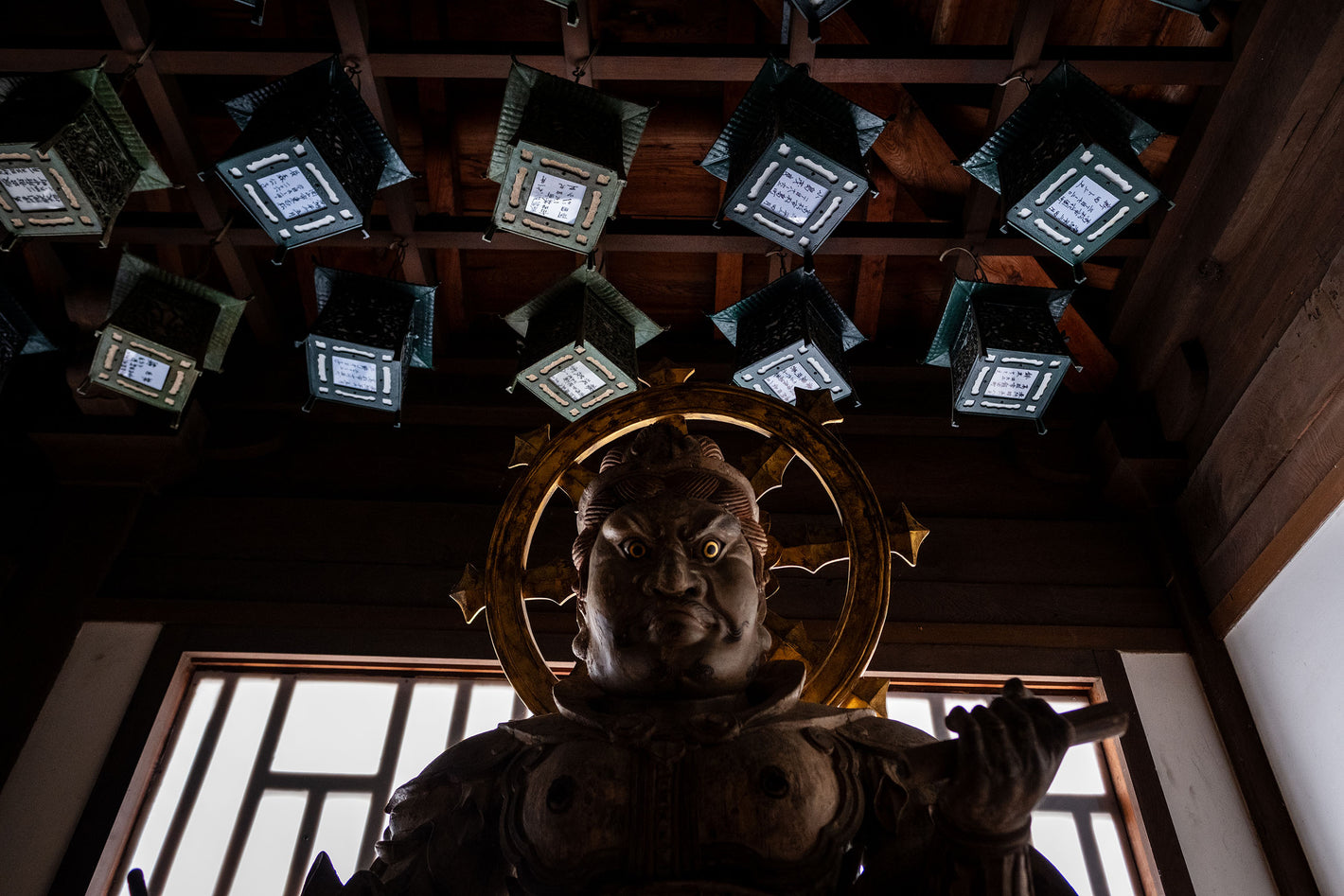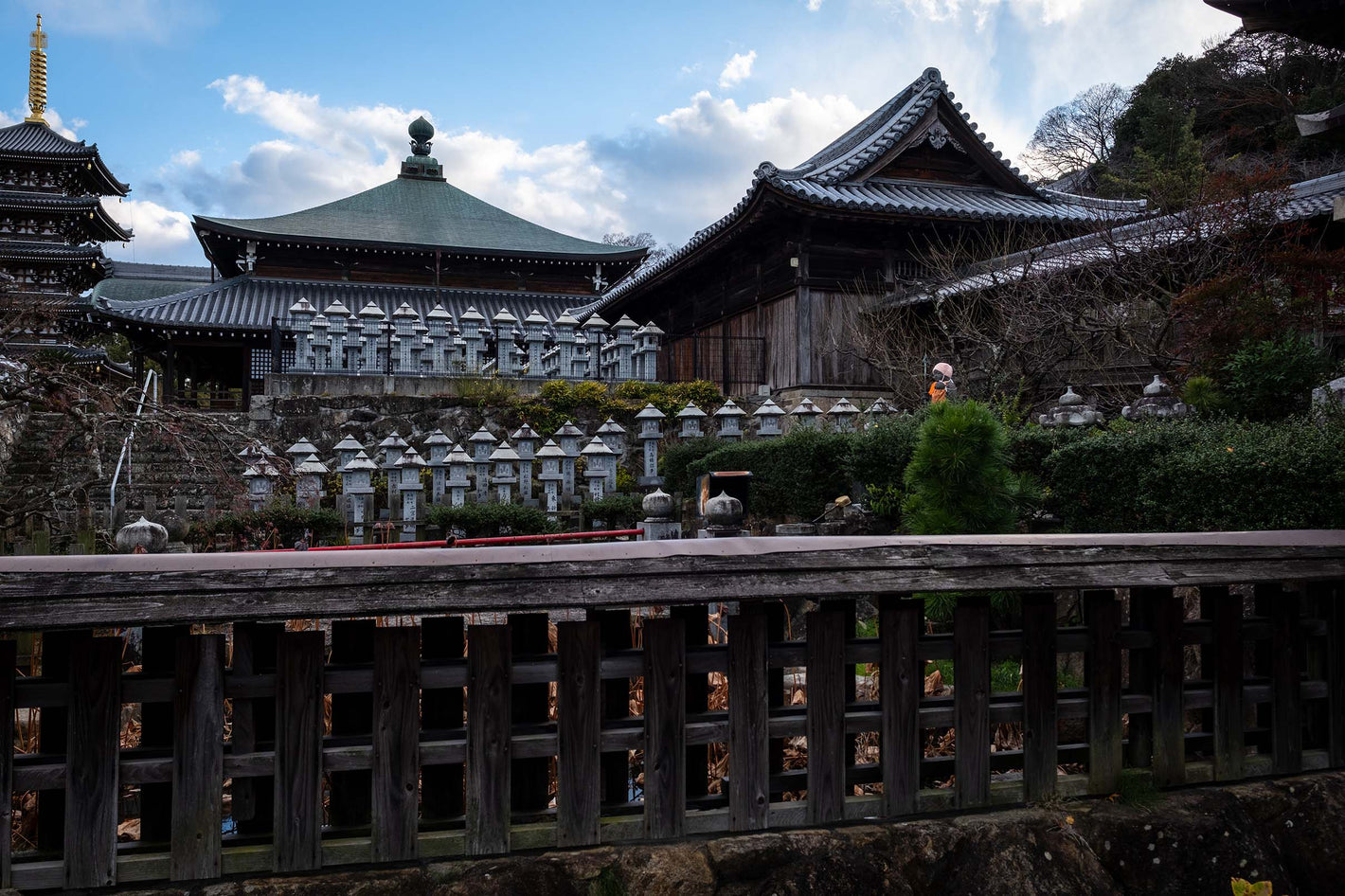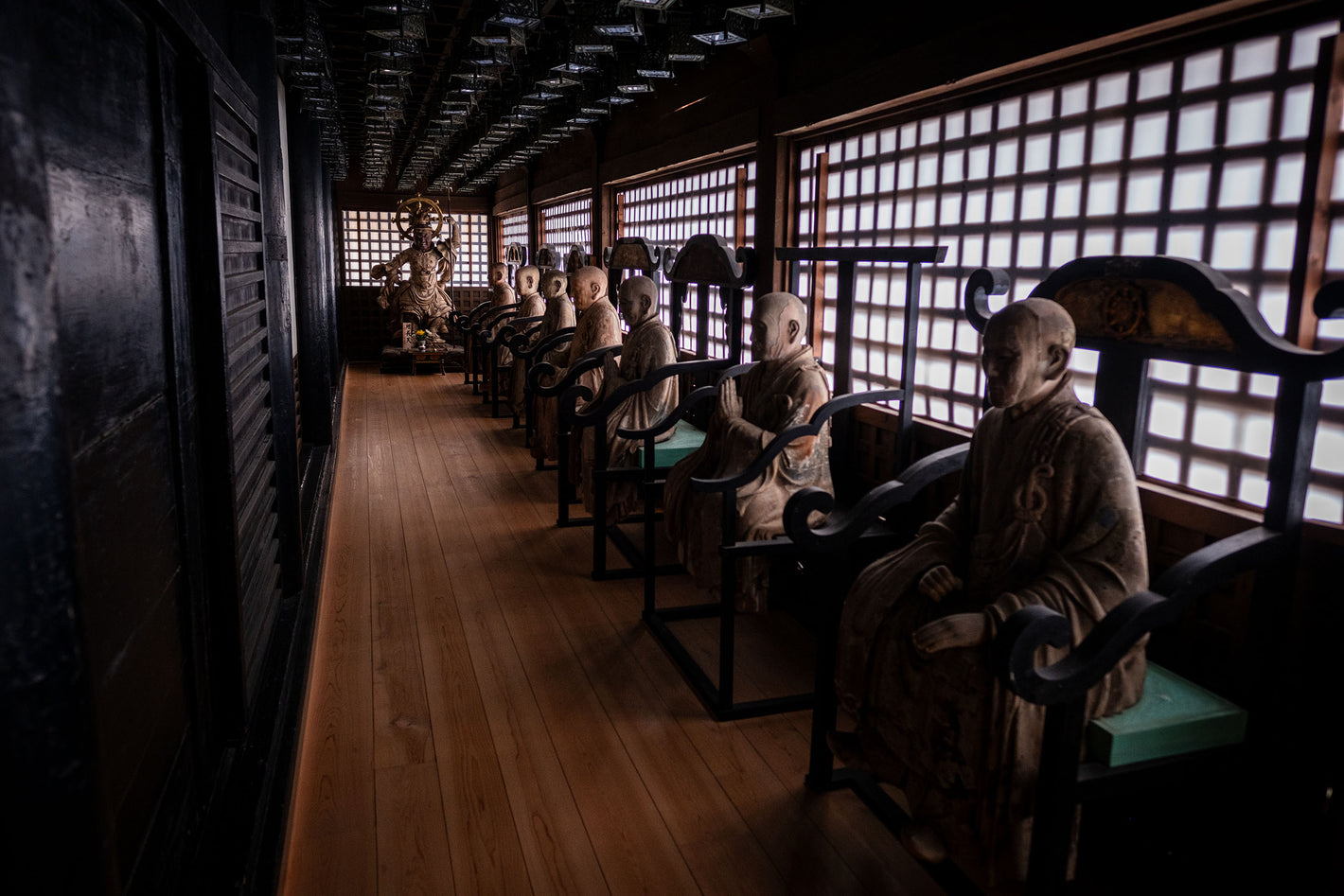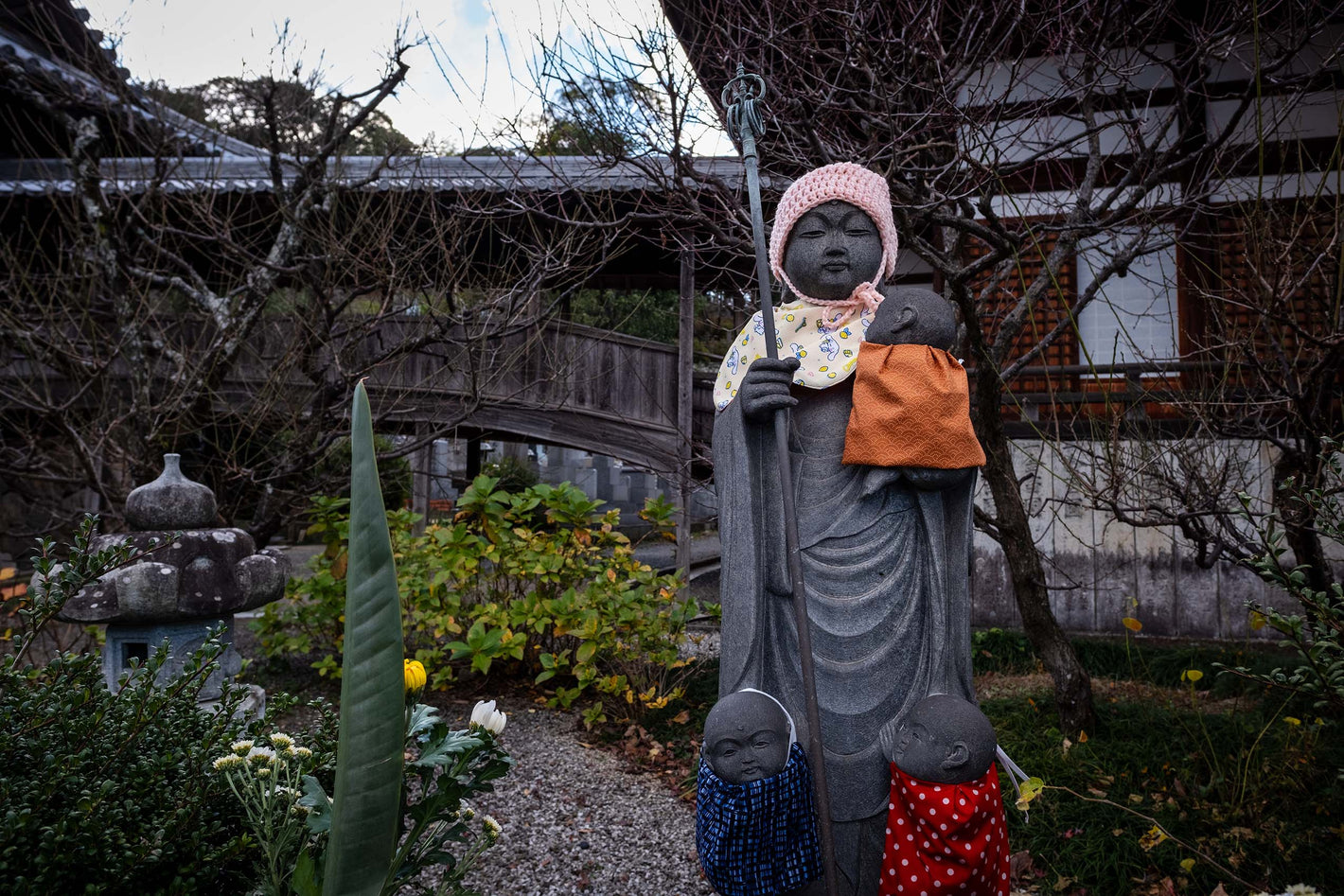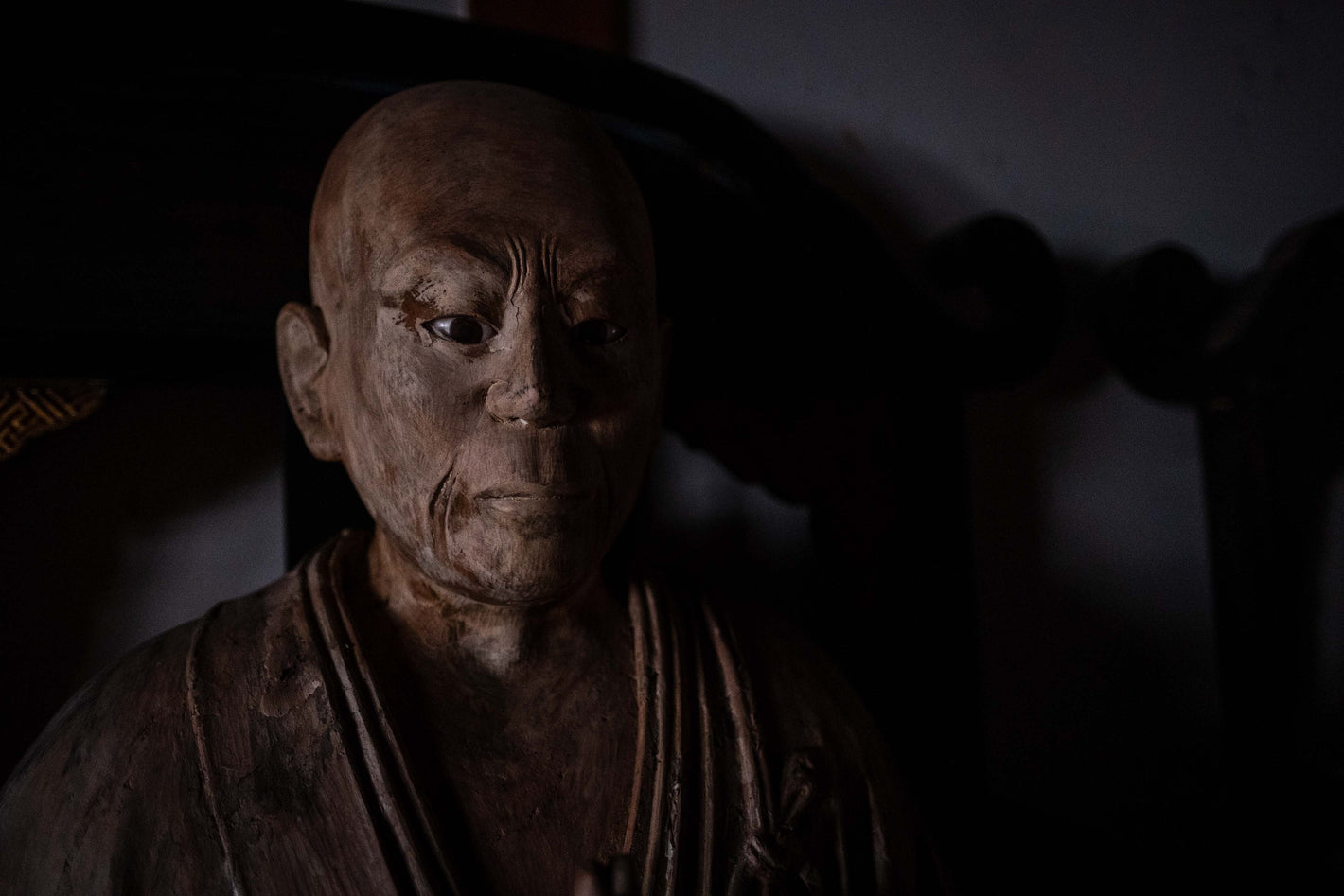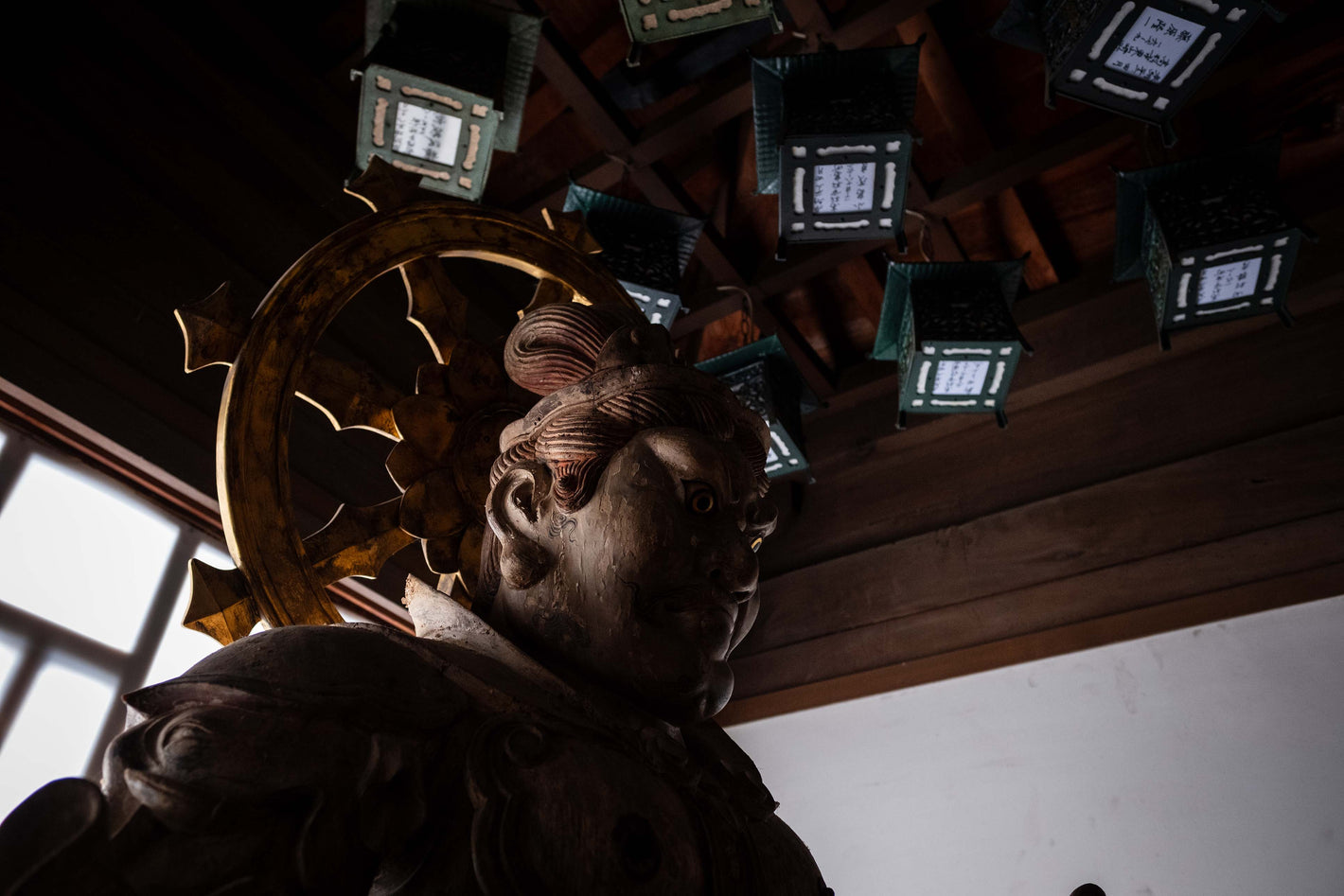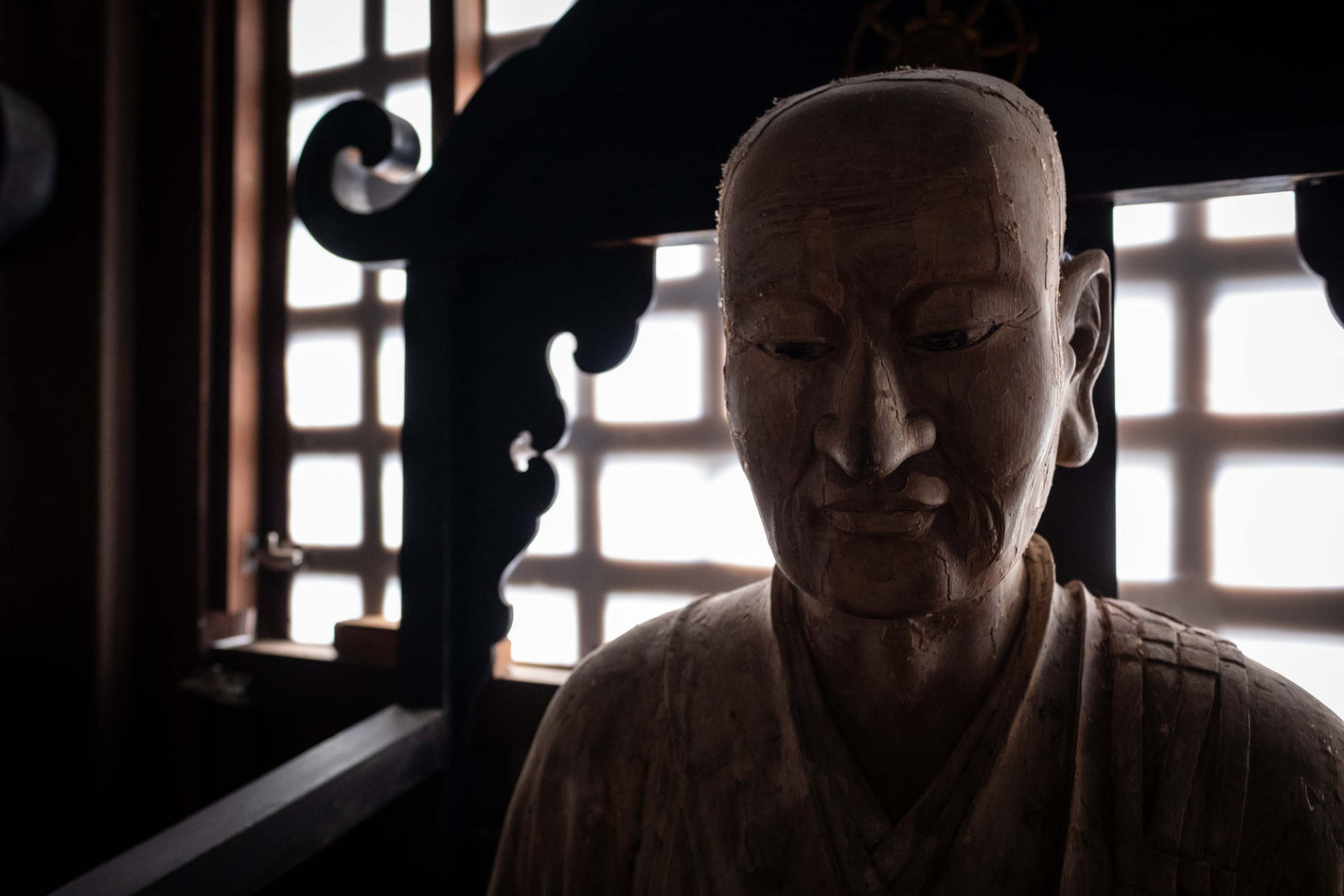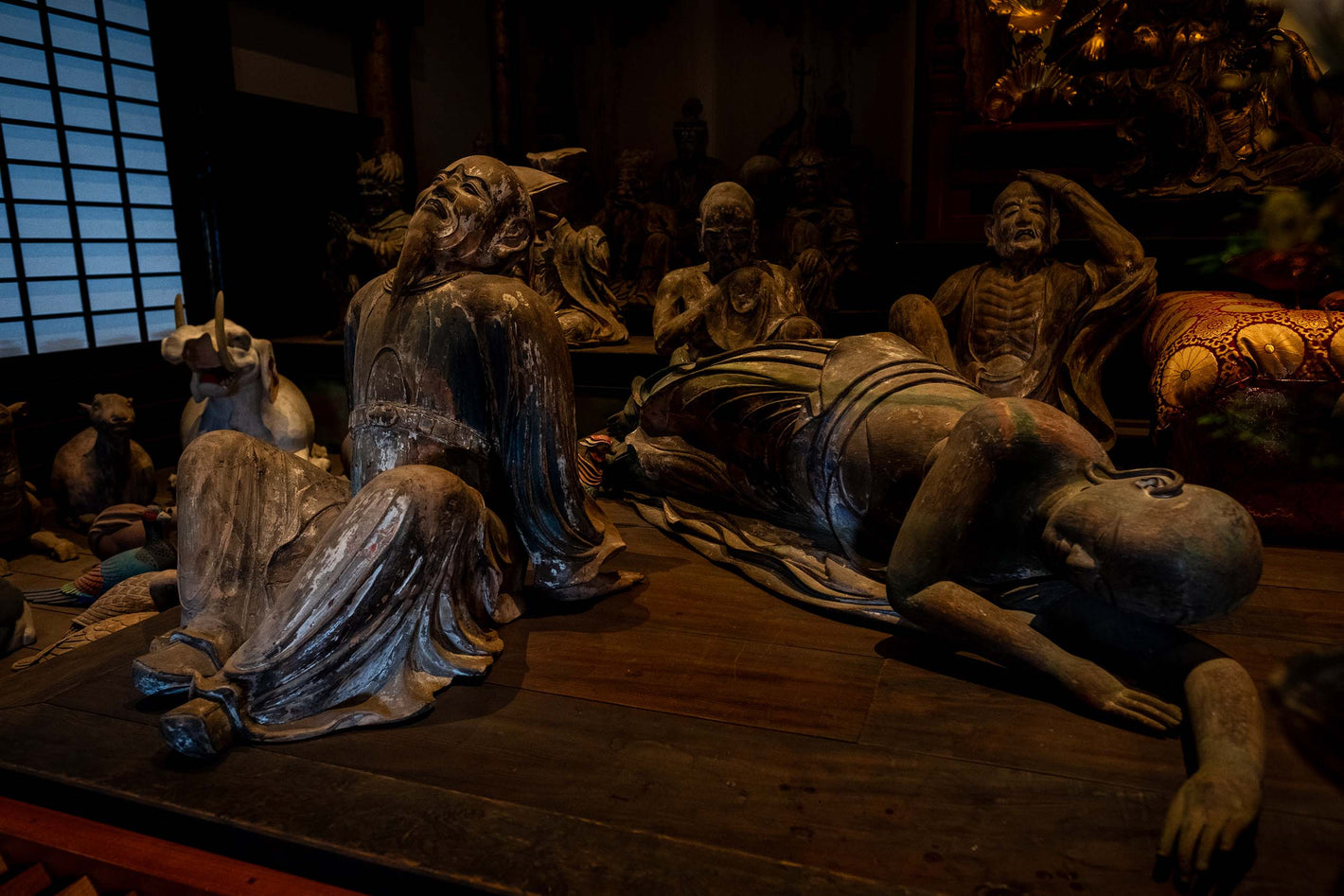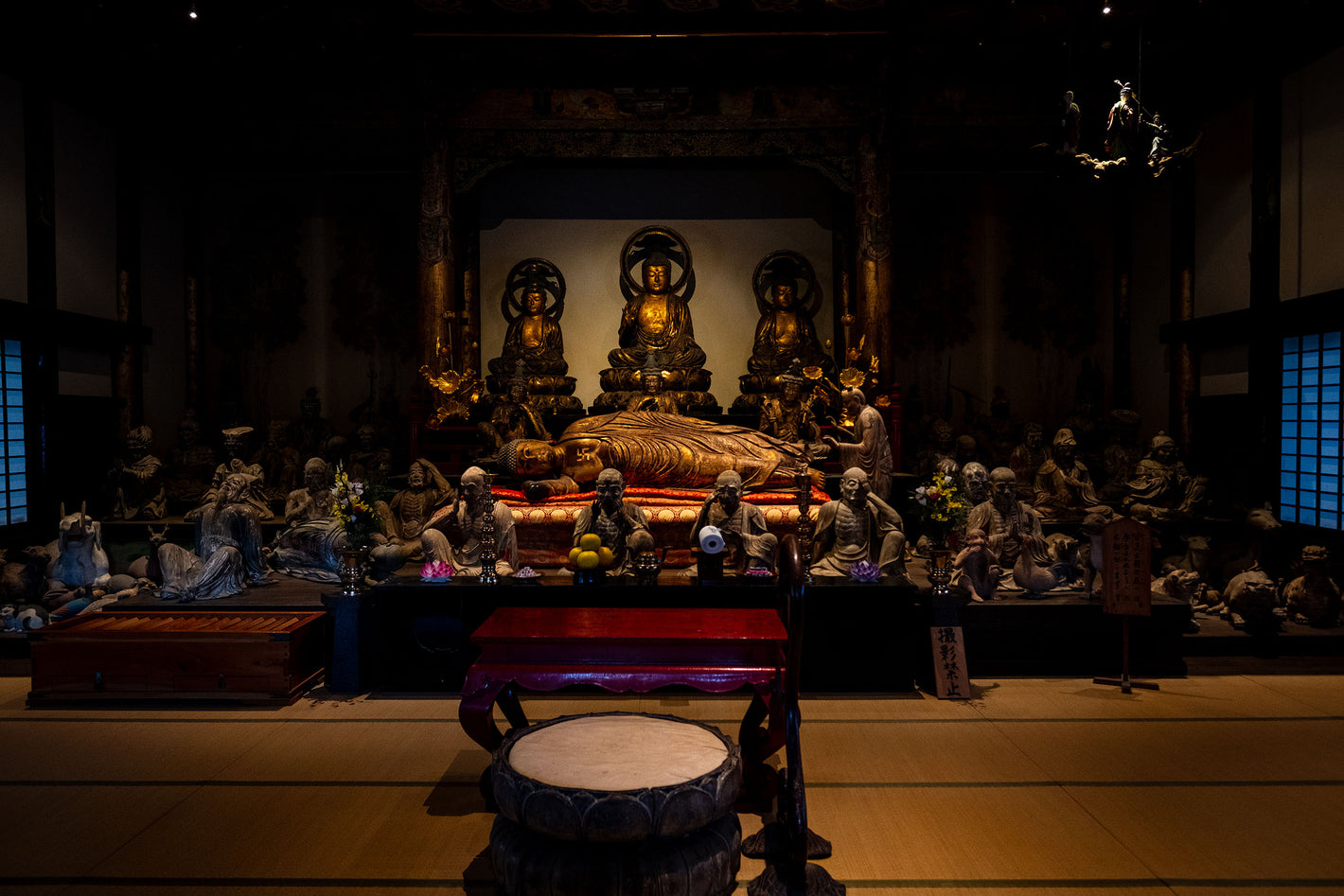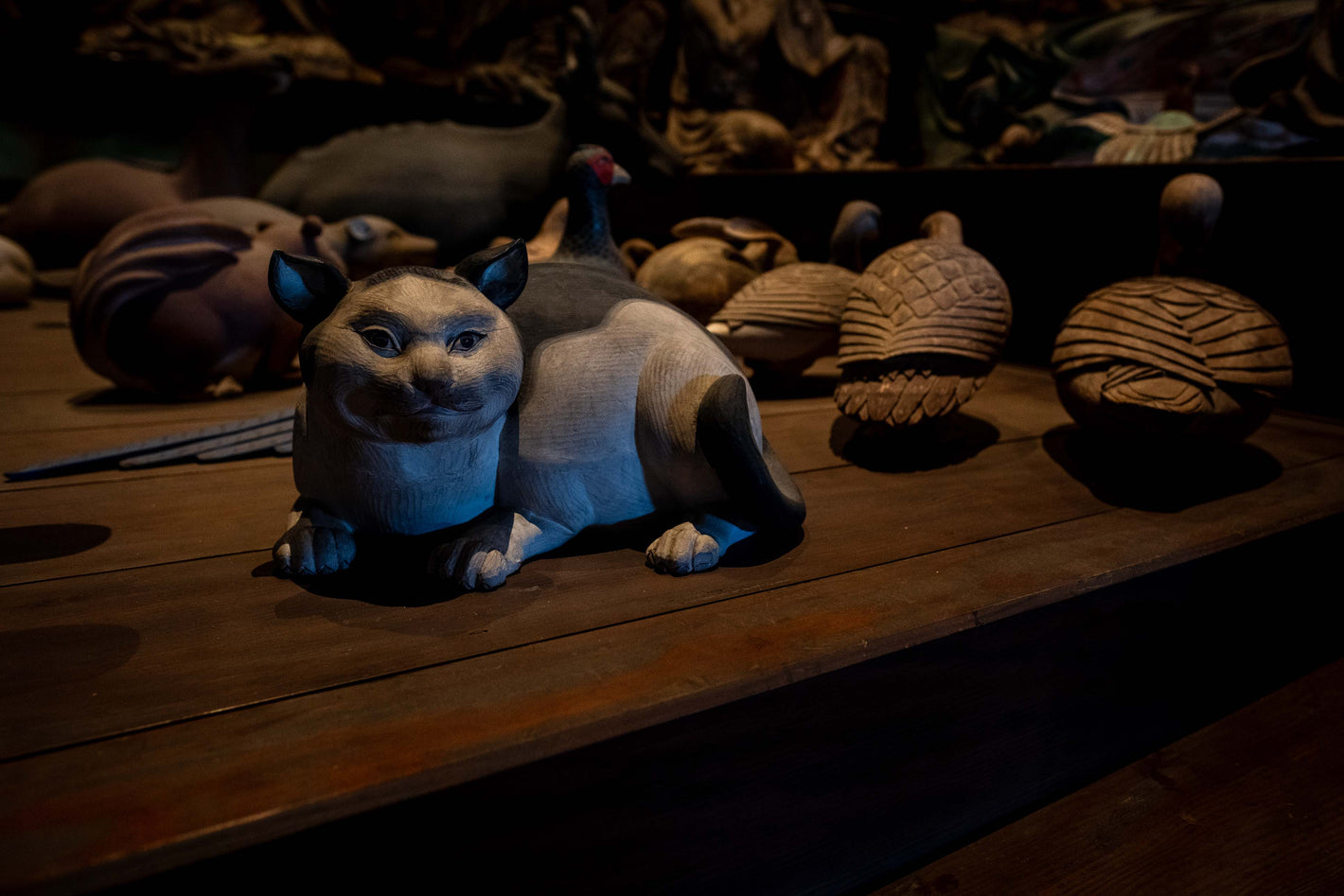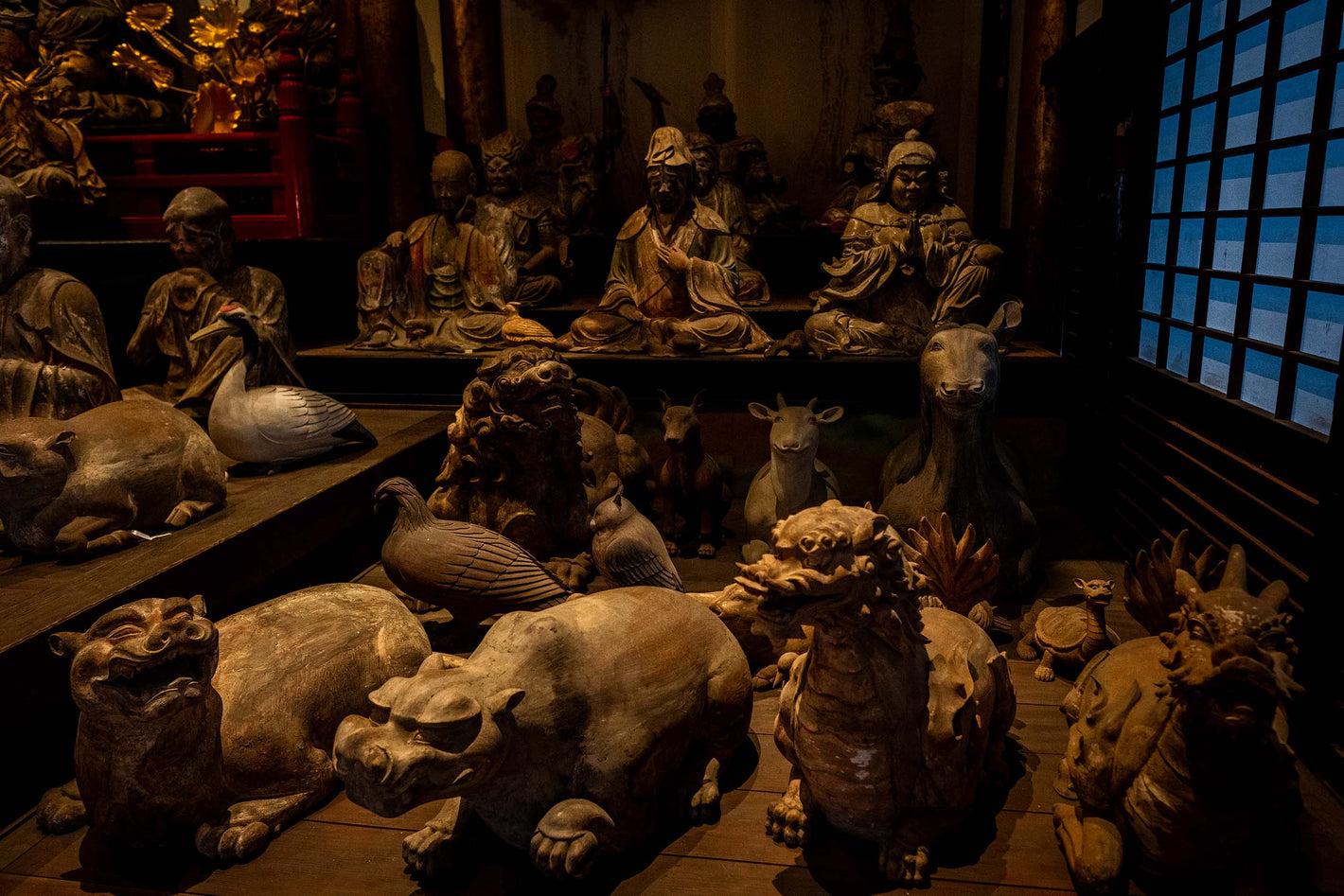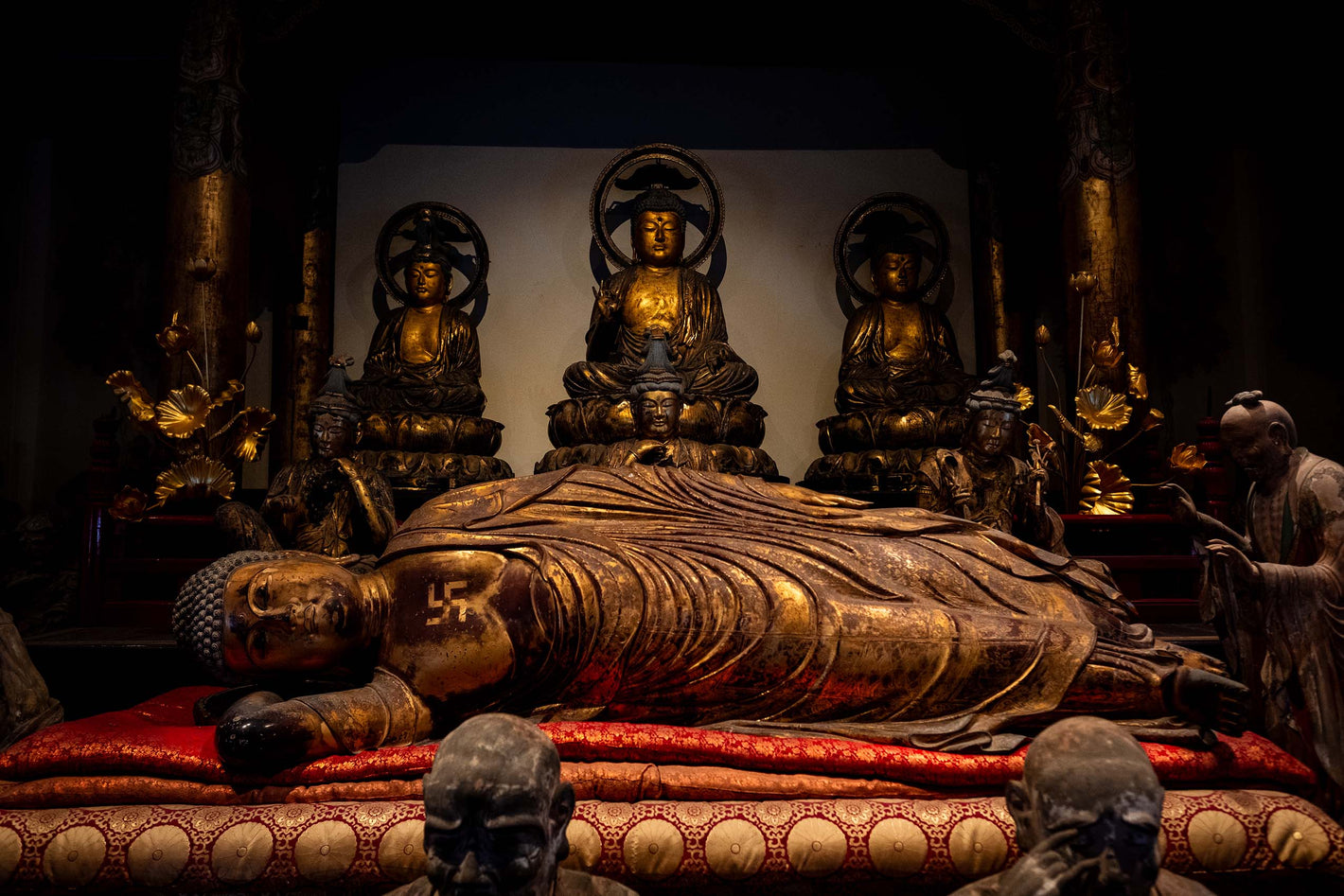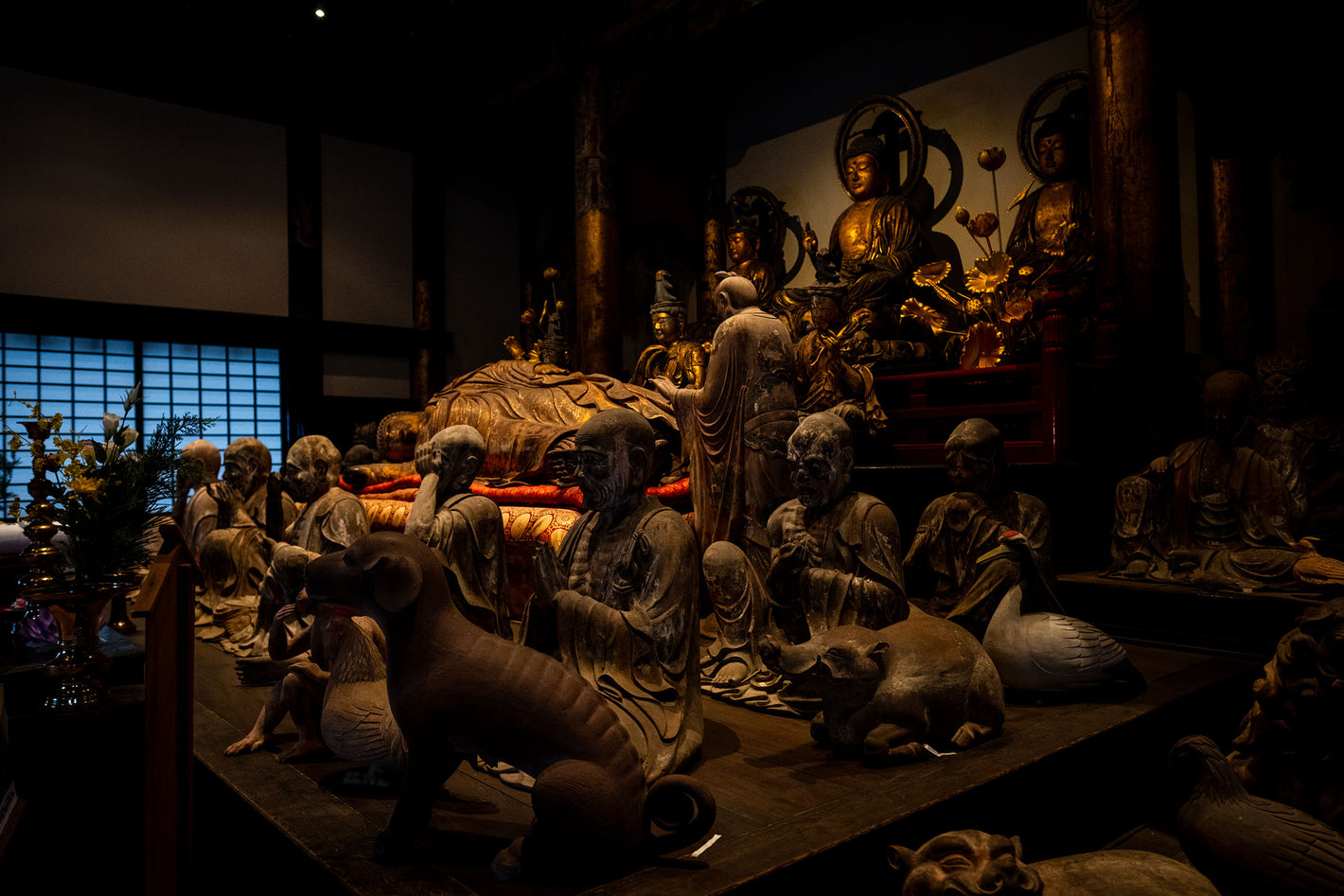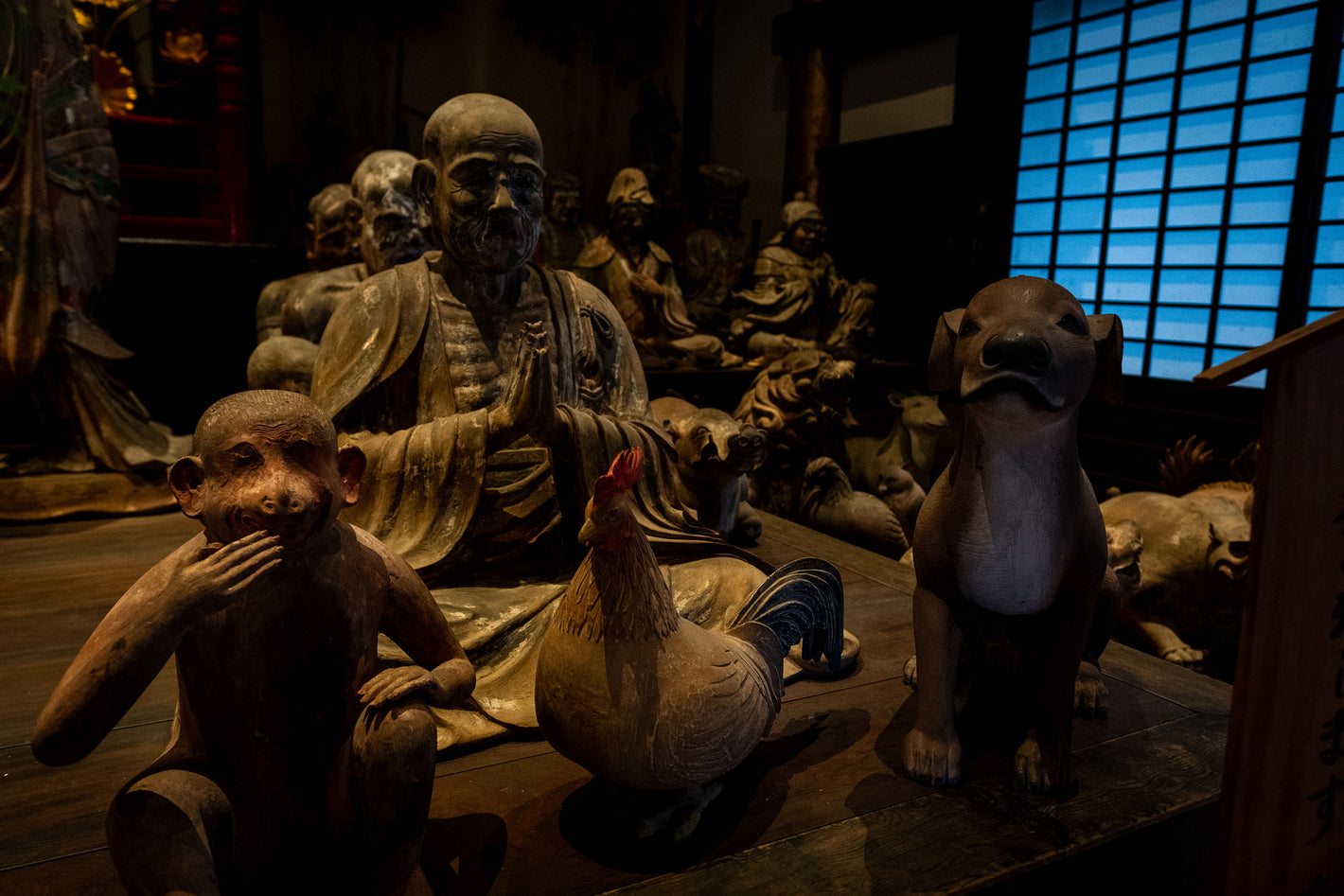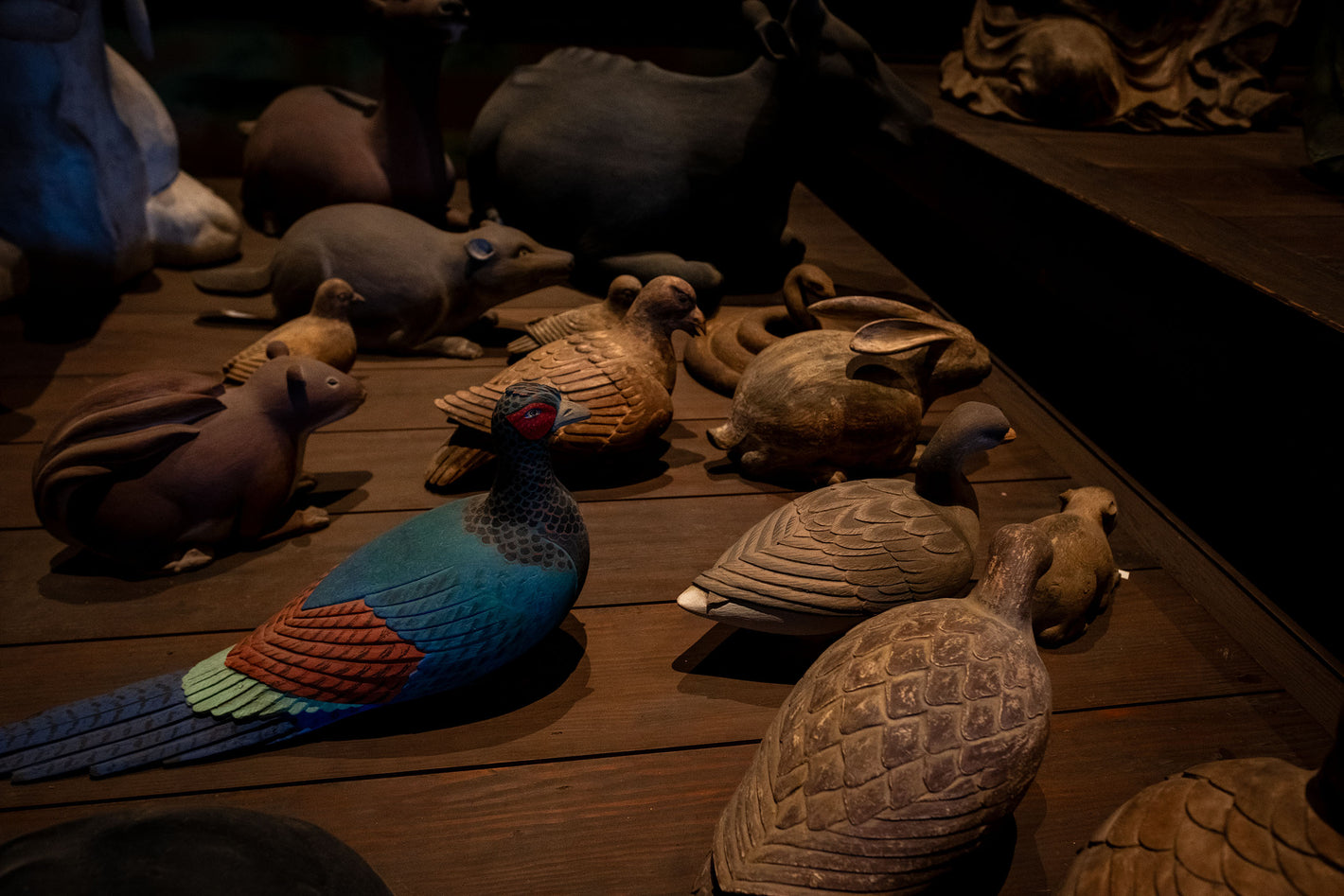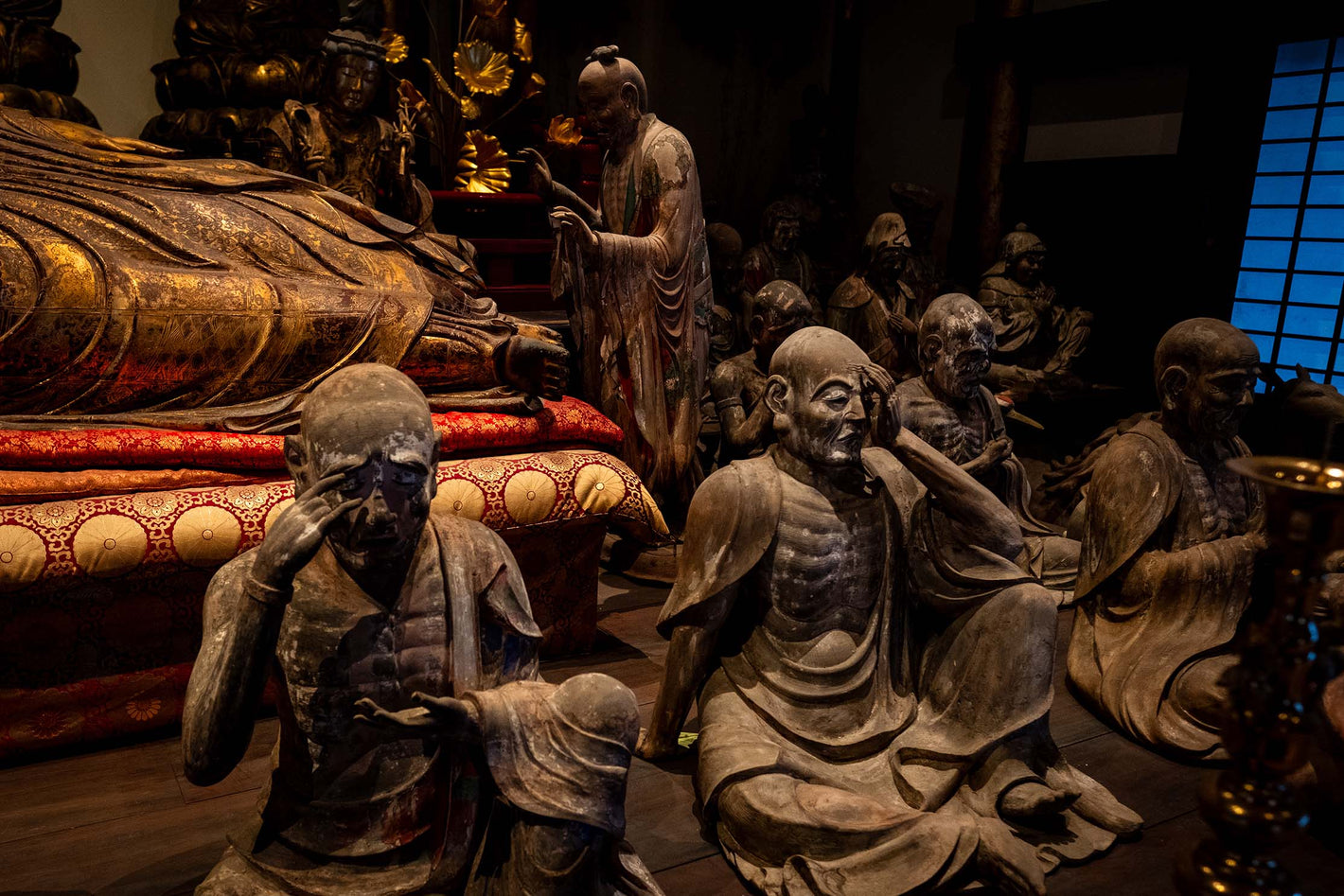The town of Busshōzan seems to rise from the surrounding fields in an almost casual kind of way and the meandering Shōwa Era streets and alleys stand in some sort of juxtaposition to the concrete-framed corporate culture of Takamatsu City to the north. Literally meaning, “Living Buddha Mountain” the town might be forgotten were it not for the popular Busshōzan Onsen which opened only as recently as 2005.
Yet despite the small-town atmosphere and unassuming character, Busshōzan is home to the Hōnenji Temple complex which straddles the strip of land between the emerald-green waters of both the Hira and Mae Ponds. And while architecturally impressive in its own right, Hōnenji is all the more fascinating in that way that it managed to thread itself into local history in no small fashion as the family temple of the Matsudaira Family, the old feudal lords of Kagawa Prefecture.
Chanting the Name of the Buddha
The temple that would eventually become Hōnenji was originally located far to the southwest amid the fields and rugged mountains of Mannō Town and called Shōfukuji. In 1207 the monk and founder of Jōdō (Pure Land) Buddhism Hōnen was exiled to Kōchi Prefecture far to the south of Shikoku at the age of 75, but is said to have spent some 10 months at Shōfukuji spreading his teachings to all that would come listen.
Briefly, the Pure Land Buddhism of Hōnen emphasized the “nenbutsu,” or the recitation of the name of Amida Nyorai the Buddha of Infinite Ligh and Life. Nenbutsu would ensure that even those beings trapped in the lowest depths of Buddhist Hell or anywhere in between the layers of Buddhist Cosmology would be able to be reborn into Amida’s Pure Land where all beings could finally achieve awakening under perfect conditions. For Hōnen, everyone was within reach of Enlightenment regardless of status.
The simple methods taught by Hōnen were in contrast to more elaborate ritualistic practices of Tendai and Shingon or the meditation of Zen schools and quickly became popular with the famers, prostitutes, impoverished samurai, as well as the other common folk of Japan in addition to making gains in some noble circles. However, the freshness and popularity of these teachings not only upset the Buddhist community of the capital but also threatened the strict hierarchy of Kamakura Japan and from 1207 to 1211 the practice of nenbutsu was actually banned and Pure Land was persecuted.
Yet, the ban was ultimately lifted and Hōnen was allowed back to the capital where he died in 1212. Yet even with the founder of the sect himself reborn into the Pure Land and despite being in the very prefecture where Kūkai, the founder of esoteric Shingon Buddhism, was born, this particular Pure Land Temple would prosper.
A Patron of the Faith
After the tumult and violence of the Sengoku Era (1467-1615), Japan settled into the relative peace of the Edo Era which would last until the late 19th Century when civil war would erupt again. During this time the Tokugawa Family where the rulers of Japan and early on they began the process of redistributing land and power amongst those who had been loyal to them during the decades long struggle for control of the Japanese Archipelago. Among these were “shinpan” daimyō, or certain family members of the Shōgun himself. One of these was a branch of the Matsudaira Family which had been granted lordship over Kagawa.
Matsudaira Yorishige (1622-1695) was the first of these rulers and was actually a grandson of Tokugawa Ieyasu himself, the founder of Edo Japan. Despite his status, it seems that Yorishige was a good ruler and is remembered as a pious lord who enjoyed and helped popularize tea ceremony and poetry. In particular, Yorishige was a proponent of Pure Land Buddhism and over the course of 3-years, Yorishige had Shōfukuji moved from Mannō piece by piece to be put back together again in Busshōzan and gave it the new name of Hōnenji (Hōnen’s Temple), establishing it as his family’s temple.
And it really does seem that Yorishige was a fair ruler as he even allowed for the local populace to be buried at his family temple on the hill on the temple ground. And while these graves needed to be below Yorishige’s own family plot, it still demonstrates a unique sense of equality for a lord in Medieval Japan. The feudal past of the town is even still celebrated today every October along the “Tonosama Kaidō,” or “The Lord’s Road,” a stretch of traditional homes and shops leading to the temple graveyard. During this festival the people who call Busshōzan home dress in the attire of the Edo Era and recreate the walk to visit the lord’s family grave.
Kagawa’s Pure Land
Hōnenji’s pagoda is perhaps the most iconic piece of architecture found on the temple grounds and seems to grow out of the earth like a massive lotus or vajra symbolic of our own inherent enlightenment. The pagoda stands tall against the greenery of the hill housing countless graves and topped with the “Raigōdō,” a hall dedicated to the coming of Amida Nyorai to take away departed souls to his Pure Land. And the layout of the temple itself seems to mirror that very journey to that Pure Land in its arrangement.
When entering the temple the first thing that one walks by is a Hall for the 10 Kings of Hell, dressed as scowling bureaucrats who intend to judge us for our life choices and allocate punishment if we are so unfortunate to end up in the Hell Realm. Next is the actual temple complex, whose halls are larger, meant to hold practitioners coming to pray rather than to be used in ritual as is often the case with Shingon temples.
The main hall houses a statue of Amida Nyorai which seems to welcome visitors after passing by the Kigns of the Hell. The statue is said to have been carved by Hōnen himself and is considered a “hidden Buddha” enshrined within the temple’s inner-sanctum. The nearby Sanbutsudō Hall holds statues of Amida Nyorai, the historical Buddha, as well as Miroku Bosatsu, the Buddha of the future.
The Sanbutsudō (literally, 3-Buddha Hall) is impressive and holds a number of statues of Buddhas, savior deities, as well as fierce, strategically placed protector gods forever warding off evil. In a large richly adorned room is a statue of the “Sanuki Sleeping Shaka,” which is a statue depicting the Buddha entering Parinirvana, or absolute extinction form the cycle of rebirth. The laying Shaka is surrounded by his followers as well as animals mourning his passing as well as Amida Nyorai and his attendants and other heavenly beings. The arrangement and style of the statuary and other art makes for a gripping experience deep within the halls of the temple.
Climbing the steps to reach the Raigōdō dedicated to the coming of Amida Nyorai at the top of the graveyard hill is a fitting climax to the temple and a symbolic representation of Amida Nyorai ushering us into the Pure Land after passing by the judges of hell. And just like the ultimate reward of the Pure Land, the sprawling view from the top of the graveyard hill is certainly worth it.
For some, Busshōzan might just be a place with a nice onsen and some trendy cafes, which can be perfectly fine. However, it is also a place intimately tied to the rulers of Medieval Kagawa and is a place that shows the flexibility and diversity of Buddhism in Japan; the fact that a Pure Land temple could be so tied to a feudal ruler so near to the place of Kūkai’s birth is certainly intriguing. But it is also home to a place where Amida Nyorai continues to beckon countless beings towards his Pure Land on this place we call Shikoku.
Written by H.Sapochak
Photos by Pierre Verney
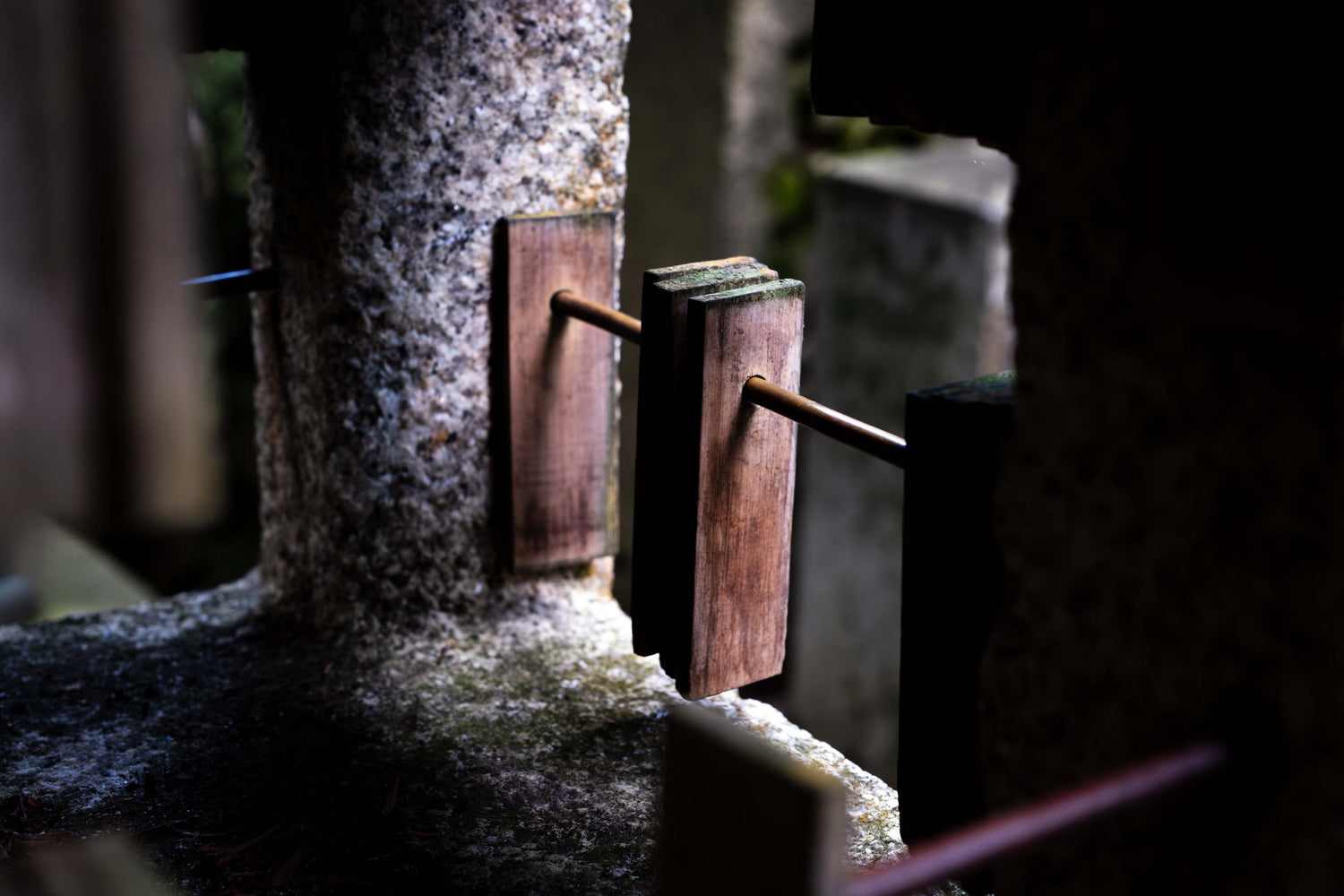
Konpira Shrine: Divinity and Diversion
The 88-Temple Shikoku Pilgrimage is well-known across Japan as well as abroad and remains one of the island’s biggest draws. And while this pilgrimage is “the” pilgrimage trail for many, there are a myriad of other associated pilgrimages which thread across Shikoku and continue the work of weaving the people, temples, and scenery of each of the four prefectures of this place we call Shikoku into a rich mandala of culture and tradition.
In partnership with Discover Shikoku!
-
 Disover Shikoku
Disover ShikokuWelcome to Japan's most creative and bespoke travel experience, Discover Shikoku! We are a regional destination management company covering the mystical island of Shikoku, the Seto Inland Sea, and the coastal regions which surround it. If you're in search of a one-of-a-kind handcrafted travel experience fully tailored to your expectations then welcome home... We've got just what you're looking for.

